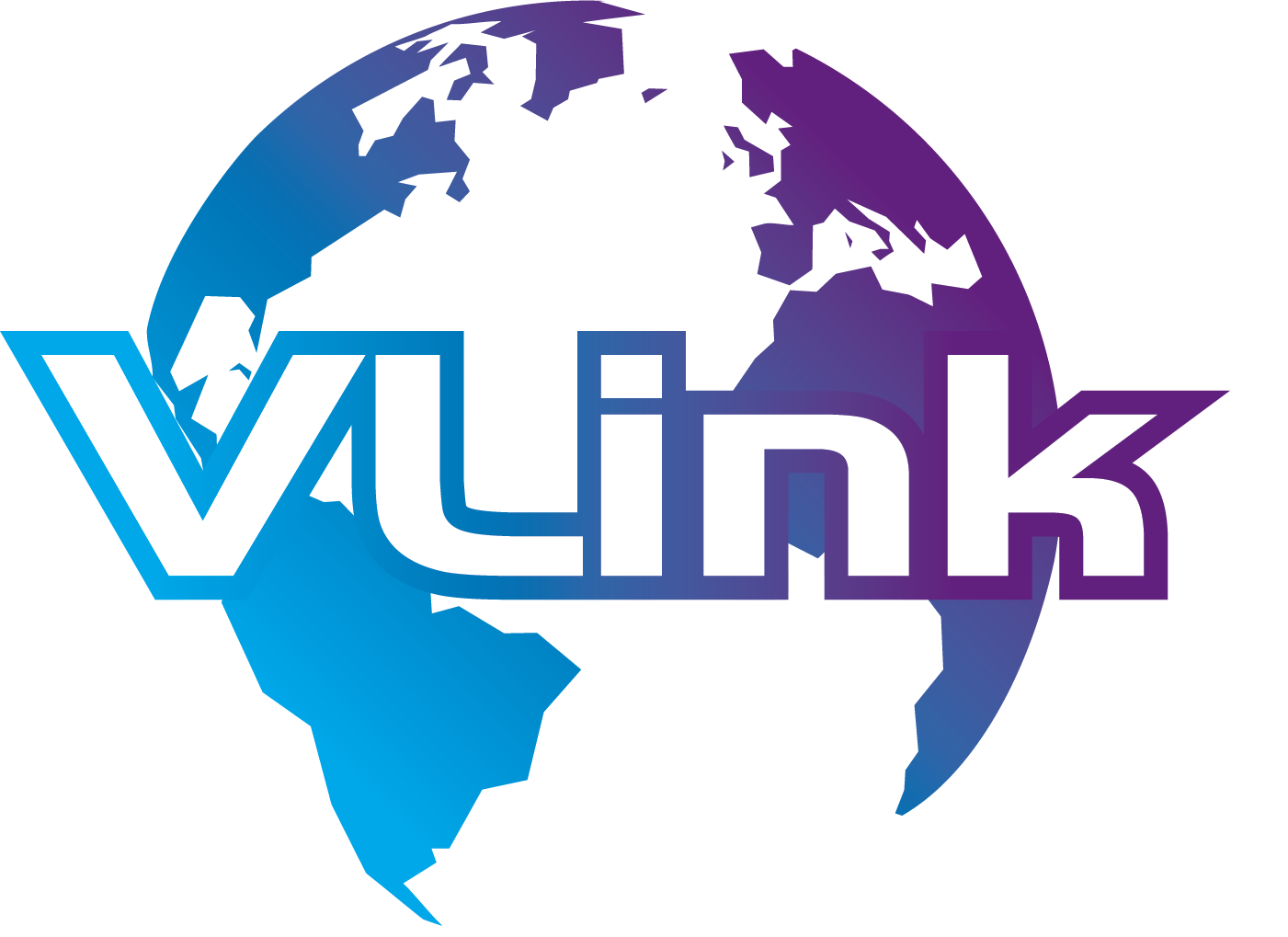Healthcare organizations in the US and Canada stand at the intersection of critical patient care and cutting-edge technology. This nexus creates an inherent tension, particularly for IT leaders: how do you foster innovation while upholding the confidentiality, integrity, and availability of sensitive patient data?
The answer lies in mastering the HIPAA Compliance Checklist.
For IT leaders, staying up-to-date with regulatory frameworks like HIPAA (Health Insurance Portability and Accountability Act) is crucial to avoiding severe penalties, reputational damage, and loss of patient trust. If you are responsible for managing IT infrastructure, building HIPAA-compliant applications, or ensuring your organization follows healthcare privacy laws, a thorough HIPAA compliance checklist becomes your go-to guide.
This blog will guide you through a HIPAA IT compliance checklist specifically designed for IT leaders. We will cover requirements, security safeguards, steps for digital transformation, cybersecurity strategies, and practical measures for implementing HIPAA compliance in today’s AI-driven healthcare landscape.
Why HIPAA Compliance Matters More Than Ever
HIPAA is not just about avoiding fines, which can range from $137 to $2 million per violation per year, depending on the severity of the offense. It’s about protecting Protected Health Information (PHI) and ensuring patient confidentiality. Compliance strengthens trust and helps streamline digital transformation initiatives, software development, and third-party collaborations.

Key reasons IT leaders must prioritize HIPAA:
- Rising Cyber Risks: 90% of healthcare organizations experienced a breach in the past two years.
- Enforcement is Tightening: The Office for Civil Rights (OCR) is levying harsher penalties for noncompliance, often targeting failures to conduct proper risk management analyses for safeguarding.
- Digital-First Healthcare Ecosystems: Telehealth, cloud-based EHRs, and remote monitoring increase the attack surface, increasing vulnerabilities without solid compliance controls.
- Patients Demand Digital Trust: They want their data encrypted, stored securely, and used responsibly.
The HIPAA IT Compliance Checklist
Here’s a comprehensive HIPAA compliance checklist tailored to IT leaders. This roadmap is divided into three critical phases, progressing from foundational Governance to in-depth Technical Implementation and ultimately to Continuous Maintenance and Audit.

Phase I: Foundational Governance (Administrative Safeguards)
These steps establish the legal, procedural, and organizational bedrock required by the HIPAA Security Rule.
1. Master the HIPAA Rules and Define Scope
The law is an interdependent set of standards. IT leaders must internalize the distinctions.
| HIPAA Rule | IT Leader's Focus | Key Actionable |
| Security Rule | Primary Domain. Mandates technical controls (encryption, audit logs, authentication) for ePHI. | Formally appoint a Security Officer responsible for implementation. |
| Privacy Rule | Enforcing the "Minimum Necessary" standard via access controls. | Work with Compliance to define strict Role-Based Access Control (RBAC) policies. |
| Breach Notification Rule | Enabling timely, accurate notification via a tested Incident Response Plan. | Ensure immutable logging is configured across all ePHI systems for forensic readiness. |
2. Conduct Comprehensive ePHI Inventory and Data Mapping
Compliance is impossible without knowing what data you have and where it resides.
- Inventory All Assets: Document every system, application, and storage location (databases, file shares, cloud buckets, SaaS integrations) that creates, stores, or processes ePHI.
- Data Flow Diagramming: Visually map how ePHI moves through the network, particularly across APIs, mobile apps, and third-party vendor integrations.
- Leverage DLP/Scanning Tools: Use Data Loss Prevention (DLP) and scanning software to automatically identify and classify PHI markers in non-traditional locations (e.g., email archives, developer environments).
- De-identification Policy: Establish procedures for de-identifying or anonymizing ePHI for non-production use (testing, analytics) to minimize exposure.
3. Formalize Governance and Risk Leadership
Appoint the required roles and establish the process for continuous risk management.
- Appoint Compliance Officer: Responsible for policy, training, and legal/regulatory updates.
- Mandate Risk Analysis (The Single Most Critical Step): Conduct a formal, documented risk analysis annually or upon significant system change. Identify all threats (internal/external) and vulnerabilities (software, configuration), calculating the likelihood and impact on ePHI Confidentiality, Integrity, and Availability.
- Risk Management: Prioritize and implement mitigation plans for all High and Medium risks identified in the analysis, documenting every decision and action taken.
Phase II: Deep Technical Implementation (Technical & Physical Safeguards)
These steps directly implement technology to protect electronic protected health information (ePHI).
4. Implement Zero Trust Access Control
Go beyond simple passwords. Restrict access based on identity and context, following the "Minimum Necessary" principle.
- Unique User IDs: Enforce a unique ID for every user, service, and application accessing ePHI.
- Multi-Factor Authentication (MFA): Mandate MFA for all logins to ePHI systems, privileged accounts, cloud consoles, and remote access (VPN/VDI).
- Role-Based Access Control (RBAC): Deploy fine-grained permissions that restrict a user's access only to the datasets and functions absolutely required for their role.
- Audit Controls: Enable and configure immutable audit logging on all systems accessing ePHI. This logging must record every attempted and successful access, modification, and deletion.
5. Enforce End-to-End Encryption and Integrity Controls
Encryption is the core technical defense against unauthorized access.
- Encryption at Rest: Ensure all ePHI in databases, backups, cloud storage (e.g., S3 buckets), and endpoints (e.g., laptops) is encrypted using AES-256 or a higher encryption standard.
- Encryption In Transit: Enforce the use of TLS 1.2+ for all data transmitted across open networks (including internal APIs, patient portals, and telehealth connections). Disable all outdated protocols (SSL/early TLS).
- Key Management: Implement a robust Key Management System (KMS) or Hardware Security Module (HSM) to protect, store, and rotate encryption keys independently of the encrypted data.
- Integrity Controls: Deploy mechanisms (digital signatures, hashing/checksums) to verify that ePHI has not been improperly altered or destroyed in transmission or storage.
6. Harden Physical and Environmental Security
Protecting the systems that hold the data is a non-negotiable requirement.
- Facility Access Control: Implement layered physical security for all data centers/server rooms (e.g., biometric access, key card logging, video surveillance).
- Workstation/Mobile Security: Enforce policies for automatic logoff (screen lock) after short periods of inactivity and mandatory local encryption on all mobile devices and laptops accessing ePHI.
- Media Disposal: Develop and implement a procedure for the secure destruction (e.g., certified degaussing, shredding) of all electronic media (hard drives, tapes) prior to disposal or repurposing.
7. Embed Security into the Software Development Lifecycle (SDLC)
For custom applications (EHRs, portals), security must be "Shifted Left" into the development process.
- Security by Design (SBD): Integrate security requirements into the initial design and architecture phase, ensuring the data minimization principle is applied.
- Secure Coding and Testing: Mandate secure coding practices (e.g., based on OWASP Top 10). Integrate SAST/DAST (Static/Dynamic Analysis Security Testing) tools into the CI/CD pipeline.
- Penetration Testing: Conduct mandatory third-party penetration tests before go-live and annually thereafter for any application handling ePHI.
Phase III: Continuous Operations & Auditing (Maintenance)
Compliance is a continuous process that requires operational rigor and documented proof.
8. Implement the Business Associate Management Program
Your compliance extends to every vendor. This is an Organizational Safeguard.
- BAA Contractual Prerequisite: Make a signed Business Associate Agreement (BAA) a non-negotiable contractual requirement before any PHI is shared or accessed.
- Cloud Compliance Vetting: For all cloud providers (AWS, Azure, SaaS), verify they provide proof of compliance (e.g., HITRUST certification, SOC 2 Type II report) and are meeting their BAA obligations.
- Vendor Audit: Establish a schedule for periodic security reviews of high-risk vendors to ensure ongoing security compliance.
9. Mandatory Security Awareness Training Program
Since human error is the leading cause of breaches, the focus must be on continuous education.
- Annual and Role-Specific Training: Provide mandatory annual HIPAA security awareness training for all staff, along with specialized training for IT, development, and high-privileged users.
- Phishing Simulation: Conduct regular, sophisticated AI-driven phishing campaigns to test employee vigilance and measure the effectiveness of the training.
- Sanctions Policy: Implement a clear policy for disciplinary action in response to security and PHI policy violations, demonstrating management's commitment to accountability and transparency.
10. Implement a Continuous HIPAA IT Audit Cycle
Documentation and Testing are the primary evidence required by the Office for Civil Rights (OCR).
- Incident Response and Notification Plan: Develop a precise, tested plan for detection, containment, eradication, and recovery. Conduct annual tabletop exercises to test the 60-day notification timeline.
- Leverage AI for Monitoring: Deploy AI in Healthcare Compliance tools to automate the review of system logs, providing PHI anomaly detection and reducing the time-to-detection for insider threats.
- Maintain Thorough Documentation: Create a repository of all policies, procedures, risk assessments, training logs, BAA records, and incident reports.
- Internal Audit Checklist: Use the following simplified table for monthly checks, ensuring continuous readiness:
| Audit Area | IT Leader's Key Checkpoint | HIPAA Standard Met |
| Access Control | MFA adoption rate? All access logs reviewed? | Technical (Access Control) |
| Data Protection | Encryption enabled on all production databases? Backup restore test passed? | Technical (Encryption) |
| Risk Management | All High/Medium risks from the last analysis mitigated/documented? | Administrative (Risk Management) |
| Vendor Program | Is a signed BAA on file for every vendor listed in the asset inventory? | Organizational (BAA) |
| Patching | Critical/High severity vulnerabilities patched within 30 days? | Technical (Vulnerability Management) |
Core HIPAA Requirements for IT Leadership
The mantle of HIPAA IT compliance rests squarely on the shoulders of IT leadership. Achieving compliance is not a departmental task but an enterprise-wide cultural shift, orchestrated and enforced by those managing the digital infrastructure. The modern IT leader must function as a data fiduciary, security architect, and regulatory expert simultaneously.
A truly robust and high-ranking HIPAA compliance plan goes beyond simple checklist fulfillment; it is built on four interdependent, continually monitored pillars: Governance, Risk Mitigation, Secure Operations, and Continuous Assurance.

1. Scope & Governance: Defining the Digital Perimeter
This foundational step establishes who is responsible, what data is protected, and with whom your organization partners. Without clear boundaries, all technical efforts are wasted.
- Define PHI Locations and Flow: Conduct detailed data discovery and mapping. Every IT leader must know precisely where PHI is created, stored (in the cloud, on-premises, or on endpoints), and transmitted. This includes databases, EHR systems, email servers, and mobile apps. This forms the absolute basis of your HIPAA compliance checklist.
- Appoint and Empower Leadership: Formally appoint a Security Officer and a Privacy Officer. These individuals must be cross-functionally trained and granted the authority to enforce security and privacy protocols across all departments.
- Formalize the Business Associate Agreement Program: Create Business Associate Agreement Program documentation and a robust tracking system. HIPAA mandates a BAA with every third-party vendor (cloud providers, analytics tools, managed service providers) that accesses, creates, or maintains PHI on your behalf. Vetting and auditing these partners is non-negotiable.
2. Risk & Mitigation: The Proactive Security Stance
The Security Rule is prescriptive on one core requirement: risk analysis. This enables your organization to transition from reactive damage control to proactive defense.
- Conduct a Rigorous Risk Analysis: The mandate to conduct a Risk Analysis (using the HIPAA risk assessment checklist) should be viewed as an annual technical deep dive. It identifies system vulnerabilities (e.g., unpatched servers, weak access controls) and potential threats (e.g., ransomware, insider error). Document the entire process, including methodologies and findings.
- Implement Safeguard Risk Management: Translate identified risks into a prioritized mitigation plan. This involves deciding which Technical, Physical, and Administrative Safeguards are "reasonable and appropriate." A critical technical priority is implementing encryption for data, ensuring that all ePHI is encrypted both at rest and in transit using proven, strong algorithms.
- Develop a Security Management Process: Establish a formal, written process that details how your organization manages its security posture, covering hardware procurement, software patching, configuration management, and the disposal of PHI-containing media.
3. Secure Operations: Embedding Security into the Workflow
This ensures the three safeguards (Administrative, Physical, Technical) are not just paper policies but active controls enforced daily across all operational systems.
- Enforce the Three Safeguards:
- Technical: Implement strong, unique user IDs and Multi-Factor Authentication (MFA); configure automatic logoff; and manage audit controls to track all ePHI access.
- Physical: Secure physical locations, such as server rooms, with documented access controls and procedures. Secure workstations against unauthorized viewing or access.
- Administrative: Establish policies and procedures for data security that dictate the minimum necessary rule, data retention, and system retirement.
- HIPAA in Software Testing and Development: Embed security from the start. The HIPAA in software testing requires secure coding practices, integrated penetration testing, and the use of de-identified or tokenized data in all non-production environments. This ensures your applications are examples of HIPAA-compliant technology.
- Mandatory Training and Awareness: Implement a robust security awareness training program that includes compulsory HIPAA security awareness training for all workforce members upon hiring and annually thereafter. Testing for comprehension and documented attendance is essential to mitigate the high risk of human error.
4. Assurance & Response: The Cycle of Review and Readiness
Compliance is continuous. This is mainly dedicated to proving due diligence and maintaining readiness for the inevitable security incident.
- Maintain Thorough Documentation: The adage is: "If it wasn't documented, it wasn't done." IT leaders must Maintain Thorough Documentation of all risk analyses, security configurations, BAAs, training logs, incident reports, and policy approvals for at least six years. This is your defense during a regulatory audit (HIPAA audit checklist).
- Continuous Review and Update Policies: Review and Update Policies at least annually, or immediately following a significant technology change or security event. To be HIPAA compliant tomorrow, you must adapt your plan today.
- Breach Notification and Incident Response Drills: Develop breach notification plan protocols that define roles, responsibilities, and communication timelines. Regularly conduct full-scale incident response audit drills (e.g., tabletop exercises) to test your team’s ability to detect, contain, and report a breach within the strict regulatory timelines.
By integrating these pillars, IT leaders can move their organizations beyond the threshold of mandatory compliance and establish a robust HIPAA security framework that fosters patient trust and business resilience.
Essential Tools for Automating HIPAA Compliance
Several types of tools are essential for achieving and maintaining HIPAA compliance, ranging from official government resources to comprehensive commercial software platforms that automate much of the process.
The table below summarizes the key categories of tools and their primary functions to help you build a successful compliance program.
| Tool Category | Primary Function | Examples |
| Compliance Automation Platforms | Automate risk assessments, evidence collection, policy management, and employee training; provide a centralized dashboard. | Scytale, Vanta, Scrut, The Guard by Compliancy Group |
| Official Risk Assessment Tools | Guide users through the mandatory security risk assessment process, identifying vulnerabilities in the handling of PHI. | HHS Security Risk Assessment (SRA) Tool |
| Specialized Security & Communication Tools | Secure PHI in specific workflows (email, messaging, file transfer, forms). | Paubox (Email), TigerConnect (Messaging), SFTP To Go (File Transfer), Jotform (Forms) |
| Log Monitoring & Security Tools | Monitor, analyze system activity logs; detect and respond to security threats in real-time. | SolarWinds Security Event Manager |
| Free Templates & Resources | Provide foundational documents and checklists (e.g., Business Associate Agreements, privacy notices). | HIPAA Journal (Templates & Checklists) |
How to Choose the Right Tools for Your Needs
Selecting the right tools depends on your organization's specific size, needs, and resources.
- Assess Your Current Process: Identify your biggest compliance challenges, whether it's communication breakdowns, data security gaps, or inefficient documentation.
- Look for Key Features: Prioritize tools that offer automated risk assessments, continuous monitoring, automated evidence collection, and employee training management.
- Start with Free Resources: If you are a small practice or just beginning, utilize the free HHS SRA Tool and templates from the HIPAA Journal to build your foundation.
HIPAA Compliance Success: Key Lessons from the Field
HIPAA compliance is achieved through proactive risk management, strong technical safeguards, and comprehensive employee training. The following success stories highlight essential strategies for diverse healthcare organizations.
Case Studies in Compliance
| Organization | Key to Success | Core Lesson |
| Adventist Health | Established a centralized "HIPAA Program Office" and used a formal project management approach across 20 facilities. | Structure is crucial: A top-down, standardized structure ensures consistent compliance across large, decentralized networks. |
| Potomac Pediatrics | Implemented a dedicated, HIPAA-compliant chat platform for secure patient communication and scheduling. | Secure patient engagement: Use dedicated, secure platforms to manage digital patient communication and build trust. |
| BU Dental Medicine | Adopted a privacy platform to anonymize patient data before sharing it with marketing analytics tools (e.g., Google Ads). | Balancing marketing and privacy: The right tools enable effective digital outreach without compromising patient confidentiality. |
| Clearwater Clients | Partnered with a recognized third-party expert for risk analysis and compliance posture validation. | Expert partnership: External validation strengthens your position during regulatory reviews and provides actionable risk analysis. |
Building Your Strongest Compliance Strategy
Based on these lessons, fortify your compliance efforts by focusing on three strategic areas:
- Cultivate an Ongoing Culture: HIPAA is a continuous process, not a one-time checklist. Focus on constant risk management and improvement.
- Prioritize Cybersecurity Fundamentals: Implement basic yet critical safeguards, such as Multi-Factor Authentication (MFA) and a comprehensive risk analysis, as most major breaches are failures of "Cybersecurity 101."
- Document Everything: In the event of an investigation, robust documentation of your risk analysis, policies, and training demonstrates a good-faith effort to comply with regulations.
Streamline HIPAA Compliance with VLink
Navigating the intricacies of the HIPAA IT compliance checklist, especially while simultaneously driving digital transformation with cloud migration and AI in Healthcare Compliance, requires specialized expertise. Trying to manage the vast documentation, continuous risk monitoring, and vendor assessment internally can strain resources and increase the risk of oversight.
VLink offers tailored cybersecurity consulting services designed to remove the complexity of compliance from your IT team’s daily workload. Our experts help you execute a comprehensive HIPAA risk assessment checklist, rapidly implement technical safeguards such as encryption and access control, and manage your entire business associate agreement program.
We transition you from a reactive, annual compliance scramble to a proactive, continuously monitored security posture, ensuring your organization is not only audit-ready but also truly secure in the digital healthcare landscape.
Contact us today to schedule a consultation and get customized guidance for your healthcare IT strategy, ensuring your organization ranks at the top not just in Google searches, but in patient trust and data security.










 Shivisha Patel
Shivisha Patel
















